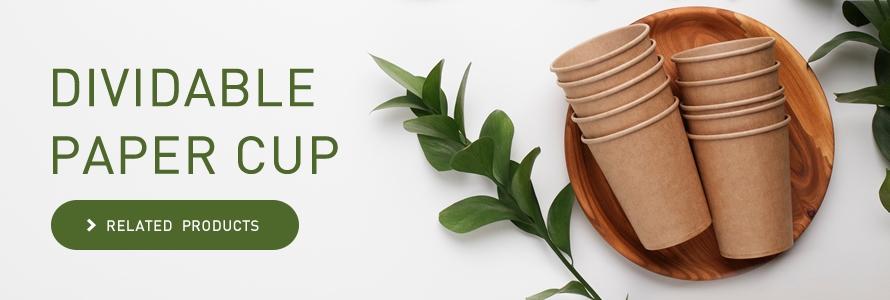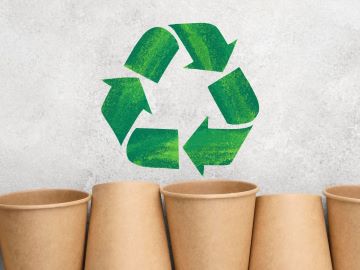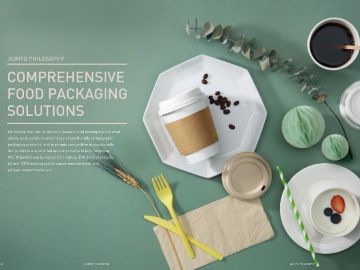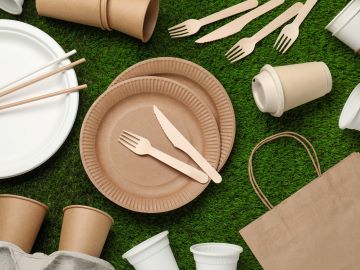What is the PLA material? What is the difference with other materials such as PP and PE?
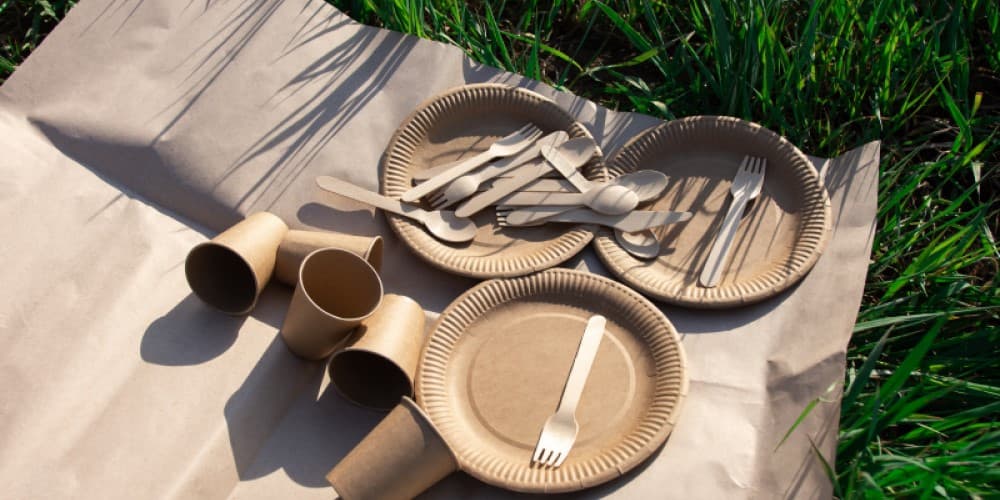
The PLA material is a common bioplastic packaging material in our daily life. For example, the dinner plates often used in convenient stores, and the fruit and vegetable boxes used to hold tomatoes and strawberries in grocery stores, etc., are all products made of PLA. This article will give you an in-depth understanding of PLA materials from the perspectives of advantages, and comparisons with other plastic, hoping to help you understand how to choose the right materials for your products.
What is PLA?
PLA, also known as polylactic acid, is a renewable thermoplastic and a polymer; unlike traditional petroleum refining plastics, PLA is made of plant-based starch from renewable resources and can be decomposed by microorganisms under specific soil conditions, more environmentally friendly, so it is also called "bioplastic". In addition, the PLA material is also very durable, not only has high antibacterial ability, it also has good tensile and ductility.
What is the difference between PLA and other coating materials?
There are many plastic products on the market, such as polypropylene (PP), polyethylene (PE) and polylactic acid (PLA). Compared with other polymer resin products derived from petroleum refining, PLA is made of vegetable starch. In addition to the composition, what are the main differences between PLA and other plastic products?
PP
Polypropylene plastic is tough and lightweight, and has excellent heat-resistance qualities 100~120°C. It serves as a barrier against moisture, grease and chemicals. PP is also commonly used for plastic bottle tops, margarine and yogurt containers, potato chip bags, straws, packing tape and rope.
PE
PE polyethylene is a white waxy translucent material. It has the advantages of high toughness, high insulation, low water absorption, heat and cold resistance, etc. It can be divided into high-density polyethylene (HDPE) and low-density polyethylene according to its chemical structure. (LDPE), HDPE is often used in plastic bags, edible oil packaging bottles, detergent packaging bottles, milk cans, paper containers, and LDPE is often used in plastic bags and plastic films. In addition, the corporate environment now pays more attention to ESG environmental, social and governance, so companies choose PLA as an alternative for food packaging.
PLA
As mentioned earlier, PLA is a bioplastic material made of vegetable starch. It has good tensile properties, ductility and antibacterial ability, and is suitable for food packaging. In addition, PLA is also hypoallergenic and low toxicity. Main characteristics such as odor free, and has also begun to be tested and used in industries such as medical supplies and toys. Our PLA coated paper products do not emit toxic gases during the production process, and can be decomposed by industrial composting facilities together with food waste. It is more environmentally friendly and suitable for trends with ESG requirements and the concept of environmental sustainability.
Coating material comparison
| Type | PP | PLA | PE |
|---|---|---|---|
| characteristic | Good heat resistance, often mixed with PE material | Made of vegetable starch, does not cause environmental pollution. | Commonly used in conventional food containers on the market |
| Advantages | High resistant to corrosion and chemical leaking, also resists to freezing well. | Compostable and degrades into non-toxic acid, It has a reduced carbon footprint compared to fossil based materials. | Low strength and hardness, but is very ductile and has good impact strength. |
| Disadvantages | Easily affected by light and heat, poor cold resistance and coloring properties, higher cost. | No special disadvantages, not suitable for long-term food storage applications. | Non-biodegradable material, its production and disposal can contribute to environmental pollution. |
*The above table is based on the analysis and comparison of various materials in the field of "food grade paper".
What products can PLA be used for?
PLA material is environmentally friendly and has good antibacterial properties, it is currently widely used in food packaging, such as paper cups, cup lids and clear cold cups, and compostable hot cups. Let's take a look at the characteristics of these products.
PLA coated paper cup
Paper cup is made out of paper and lined or coated with PLA to prevent liquid from leaking out or soaking through the paper.
The inside of the paper cup coated with PLA not only has the advantages of oil and water resistance, but also can hold hot drinks at 95°C; in addition, the material itself meets all food safety standards, and can also achieve the goal of environmental protection!
CPLA cup lid
As more and more companies begin to implement ESG policies, many chain catering companies have turned the recyclable plastic lids into compostable CPLA environmentally friendly cup lids, this material has good temperature resistance characteristics, no matter it is cold drink or hot drink, it can be perfectly sealed.
When purchasing PLA lined paper cups or food containers, please consider the following details to ensure that the customized products meet with your end-user requirements.
Good snap fit to the chosen cup rim
When purchasing PLA paper cups and lids, you need to confirm whether the rim diameters of the paper cup and lid match. Many customers concerned lid fit quality if lids and cups are made by different suppliers. We suggest to source from the same manufacturer in order to prevent spills and provides more security for the consumer.
Can it be customized
We specialized in fully custom printed paper cups for clients to build brand affinity.
Our in-house custom print designers will help you to create your compostable disposables.
Minimum Order Quantity
In order to balance production costs, many manufacturers will set a minimum order quantity. However, the scale and storage space of each client are different. For example, the quantity that can be ordered by independent catering stores is much smaller than that of chain enterprises.
We look at ways to lower your cost and feasibility closely to assist in long-term cooperation for a lower order quantity.
Does the manufacturer have certifications for quality of compostable products?
Although PLA material is suitable for single-use and take-away food packaging, each manufacturer has different production methods and control levels, and the quality of the final products will also vary. In addition, with the increase in consumer awareness in recent years, clients will start to pay attention to whether the products will release poison when heated. Here we suggest that when you are looking for a supplier, you can first confirm whether the manufacturer has verified and passed international certifications, such as the International Biodegradable Products Institute (BPI), the European Din Certco certification body for sustainable materials, to ensure that products are perfectly safe for the environment.
In summary
PLA is a resilience material widely used in food packaging, paper cups, straws, containers and other applications like films, bottles and biodegradable medical devices. When choosing PLA laminated paper products, not only does it need to confirm whether it has an international certification mark, so as to bring consumers the most peace of mind; it also needs to have the ability to create customization to help winning the favor of consumers and gain branded market recognition. We at Jiunyo not only have the above-mentioned international certification, also have Food Safety Management Systems FSSC 22000, quality management system ISO9001, FSC® for sustainable forestry and traceability of forests paper materials, and provide exquisite custom prints for each of our clients.

